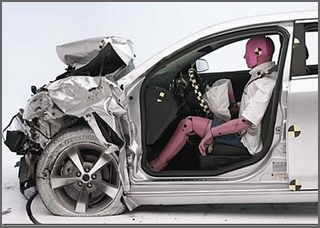Automotive Crash Test Analysis Using High-Speed Digital Video
 Today’s automobiles are dramatically safer than vehicles built 50 years ago. A long list of new highway design and vehicle requirements in combination with competitive innovation and drive has created a modern fleet of vehicles with a remarkable safety trend. In 1960, the US had over five fatalities for 100 million vehicle miles driven. In 2012, that figure dropped by a factor of five and is continuing to fall as the total vehicle fleet turns over to more modern vehicles.
Today’s automobiles are dramatically safer than vehicles built 50 years ago. A long list of new highway design and vehicle requirements in combination with competitive innovation and drive has created a modern fleet of vehicles with a remarkable safety trend. In 1960, the US had over five fatalities for 100 million vehicle miles driven. In 2012, that figure dropped by a factor of five and is continuing to fall as the total vehicle fleet turns over to more modern vehicles.A major contributor to this success has been the use of automotive imaging and crash testing in the development of new safety features. Worldwide, hundreds of crash events are staged daily to validate production vehicles and components and to aid in development of new safety concepts. Such tests are heavily instrumented, with the primary analysis tool being a high-speed image sensor. In the 1990’s the conversion from film to video got underway. Today, costly film has disappeared in favor of digital video of increasing capability. Image sensors with typical speeds of 1000 frames per second capture fine details of vehicle and component deformation during crash simulations.
High-speed automotive imaging with frame rates of 3000 or 5000 frames per second allow rapid activity such as air bag deployment to be captured and reviewed for detailed analysis.
Forza Silicon specializes in the design and manufacture of custom high-resolution CMOS image sensors for high-speed digital cameras for various camera manufacturers. In fact, Forza used a custom Forza Silicon CMOS image sensor with global shutter to create a high-speed, high-definition camera designed for automotive imaging in high performance crash test needs.
